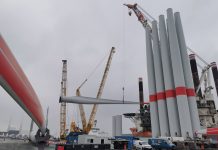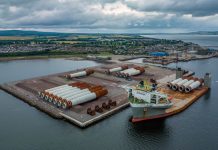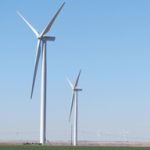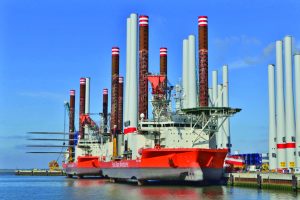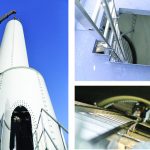The micro-siting process for a wind facility is the area where most developers struggle to link in all of the requirements related to state and local setbacks, environmental concerns, FAA restrictions, Fresnel zones, landowner requests, maximizing the wind regime, subsurface conditions, and terrain. Usually the process is long and arduous, and when the sites are “desk selected” there is a perception that the time and budget doesn’t exist to revisit the process if issues are found in the field. This is where the addition of a qualified construction engineer on your micro-siting team can be invaluable. Construction engineers primarily serve as the liaison between the physical construction and the design engineers. Their knowledge of construction techniques, combined with an acute appreciation for design engineering, lets them identify potential issues before they become lost dollars. Two areas where construction engineers are particularly helpful are in the selection of the wind turbine sites and the routing of the access roads.
Selecting the actual turbine location can present numerous ways to minimize costs by melding construction best practices with engineering know-how. One of those areas is in overcoming the misconception that a turbine should be located on the highest point of any given hill or topography change. The reality is that several feet of vertical elevation will not increase turbine output by a measurable amount. In many cases it is much more cost effective to locate the turbine in an area that will minimize the amount of earthwork required to construct the crane pad and the assembly area.
On many large wind facilities, multiple foundation designs are utilized to match the existing subsurface conditions. While most developers realize the importance of high-quality geotechnical data, some don’t realize that design engineers have to base their foundation designs on the data collected by small-diameter soil borings. In many cases, simply increasing the amount of borings or by taking additional borings away from suspect areas can identify more suitable locations. This can potentially eliminate or minimize the need for ground improvements or significantly larger spread footings. Sometimes identifying and then merely gathering additional information as close as 150 feet from a primary site can yield construction cost savings upwards of $50,000 per turbine site.
Access road layout is another area where employing the services of an experienced construction engineer can reduce construction and maintenance costs while balancing landowner relations. Many of the turbine suppliers severely limit the amount of grade change that is permitted on the access roads in order to facilitate the delivery of the larger components. When that is coupled with landowner demands, an access road can become exponentially expensive. A possible solution is to break with the conventional wisdom that insists construction access roads have to be converted to permanent maintenance roads. When you remove the construction-driven constraints, it is easier to generate a design for the permanent road. That design can then focus on mitigating potential erosion control issues and meeting the needs of the landowner, as well as maintenance personnel.
There are a few things to keep in mind when considering building a temporary construction road. In many cases the subsoil conditions do not improve the deeper you go. If the construction road is to be fully reclaimed, consider just removing the surface organic material and then design a road profile that builds upwards instead of excavating down in an effort to completely remove the topsoil. Not fully stripping the topsoil makes it is easier to maintain positive drainage during and after the construction process, while lessening the excavation requirements.
Consider the use of a geo-grid or geo-fabric to limit the amount of rock that has to be reclaimed. In many cases a layer of geo-grid or fabric can reduce your final aggregate thickness by several inches, which then reduces the overall tonnage that will need to be removed. The recycled aggregates can then be scheduled and integrated into the future work stages, or on the final access roads.
One last helpful tip for temporary roads is to limit the size of aggregate used on agricultural areas. Typically aggregate less than one inch will not damage farm equipment that may be accidentally left during the restoration process. However, aggregate larger than three inches has a habit of showing up year after year, and will certainly damage equipment.
As with most engineering efforts, upfront planning will usually result in back-end savings. Incorporating a skilled construction engineer can help to maximize those savings long before the first piece of equipment arrives onsite.
















